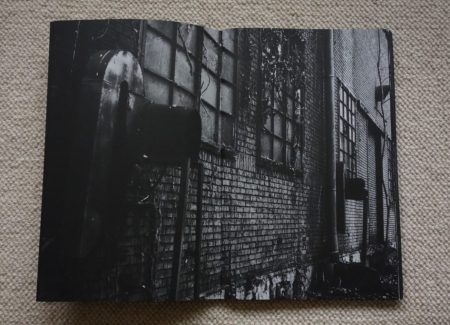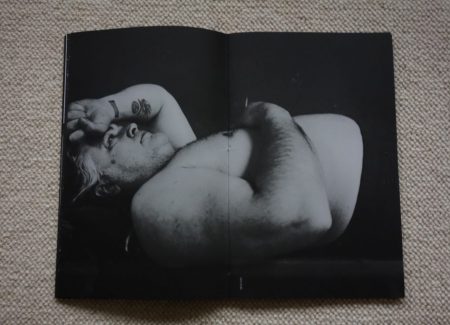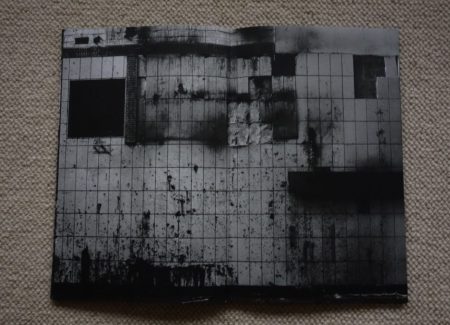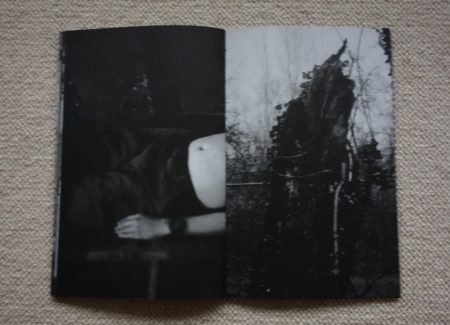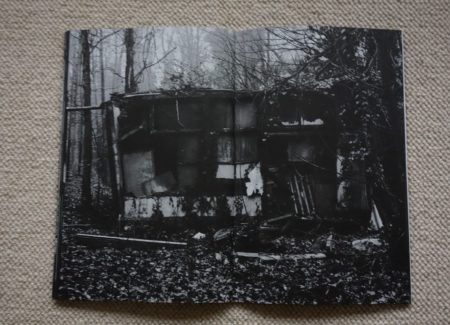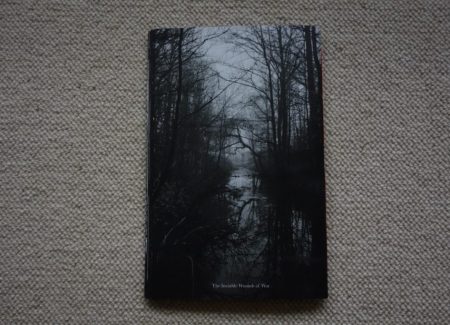JTF (just the facts): Self-published by the artist in 2016 (here). Softcover, sewn binding (with red thread), 70 pages, with 44 black and white photographs. Includes a foldout section with an essay by the artist and summaries/thumbnail images for each sitter. In an edition of 700 copies. Designed by Sybren Kuiper. (Cover and spread shots below.)
Comments/Context: For most returning soldiers, the echoes of war reverberate through their entire lives. While the physical wounds and injuries of conflict may heal relatively quickly, the invisible emotional traumas of the battlefield often follow participants home and can linger for years to come. For some, the memories (and recurring nightmares) can evoke a range of uncontrolled responses – anger, fear, rage, aggression – sometimes leading to serious outbursts and accompanying bouts of depression and feelings of anxiety and powerlessness. In recent years, we have come to understand these psychological traumas better, giving the haunted vulnerability of this post-war behavior a clinical name – Post Traumatic Stress Disorder (PTSD). And while we now have ways to diagnose and treat this condition, PTSD and its consequences remain a mystery to many in the wider public at large.
Dutch photographer Claire Felicie’s recent photobook Only the Sky Remains Untouched attempts to remedy that situation. The problem is that photography isn’t necessarily the most obvious medium for capturing the nuances of something that occurs largely in the mind. So Felicie was forced to photographically approach the subject of PTSD indirectly, using visual metaphors to try to evoke the nuances of personal unrest buried far from view.
Only the Sky Remains Untouched mixes portraits of soldiers with moody landscapes, interleaving the two sets of images into one single emotional expression. She chose as her setting a former weapons factory and testing ground in Zandaam, a set of buildings and forest regions left to rot, the decayed structures now overrun by nature. Captured in shadowy black and white, the abandoned place feels symbolically appropriate, the broken buildings and scarred trees replicating the harrowing state of mind of her sitters. Light twinkles through a dense canopy of leaves, ivy crawls over tactile brick, and paint peels in smears and stains reminiscent of the found abstractions of Aaron Siskind. And while Felicie’s images sensitively observe the lushness of these ruined textures, the forgotten squalor is quietly gloomy, filled with rust, spackled dirt, and faint echoes of grim history. It is a perfect metaphorical setting for the haunting memories of war.
Inside this fractured shell, Felicie places a series of former Dutch soldiers suffering from PTSD (identified only by their first names), most having served in Lebanon or Afghanistan. Each is shown lying down on a military cot, shirtless and in army fatigues, surrounded by the indeterminate darkness of the factory. While this prone position immediately recalls Tim Hetherinton’s famous images of sleeping soldiers, the mood here is decidedly different – these are soldiers still fighting their own demons, and those ongoing battles have clearly taken their toll. Her portraits are full of weariness and resignation, many populated by the blank stares of those lost in thought. While we might momentarily notice the tattoos or the aging muscles, it’s the faces (and the turned away backs) that that tell the story of PTSD. The images capture brave solitary struggle (and even some haggard defeat), where no one else sees the horrors hovering in the shadows.
Felicie’s tender photographs could likely have stood fine on their own, but the elegant design of this photobook significantly enhances the overall experience of her work. All of the images are printed full bleed on relatively thick matte paper and saddle stitched together, creating folds that cut the full spread prone portraits in half. The result is many bodies that are just a top or just a bottom, the other half replaced by an image of a scratched wall or a rubble strewn empty room. This juxtaposition is simple but sophisticated, putting the damaged psyches and the damaged settings into immediate dialogue. The cover has an embossed title that recedes into the darkness of a stained brick wall, the effect an apt metaphor for the obscured mental condition these soldiers face on a daily basis. As a unit, the photobook feels thoughtfully measured and humble, full of sensitivity and respect for its subject.
Only the Sky Remains Untouched is a project that turns on real empathy and trust, but that personal engagement never becomes overly sentimental. Felicie’s photographs invite us into a world of despair, but do so with an attentiveness that triggers responsive thinking. That Felicie has found vulnerable beauty here is her durable contribution to the understanding of the syndrome. She has opened a window onto the human side to an invisible tormentor, putting a face on the wrenching struggles of those who have served with such sacrifice and honor.
Collector’s POV: Claire Felicie is represented by Amstel Gallery in Amsterdam (here) and Galerie Pennings in Eindhoven (here). Felicie’s work has little secondary market history, so gallery retail or direct connection with the photographer remain the best options for those collectors interested in following up.


